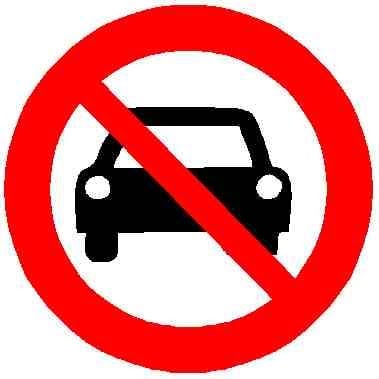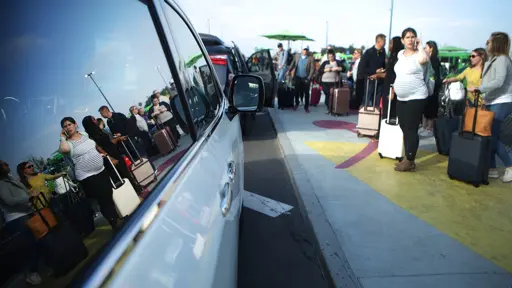Every few years, a Silicon Valley gig-economy company announces a “disruptive” innovation that looks a whole lot like a bus. Uber rolled out Smart Routes a decade ago, followed a short time later by the Lyft Shuttle of its biggest competitor. Even Elon Musk gave it a try in 2018 with the “urban loop system” that never quite materialized beyond the Vegas Strip. And does anyone remember Chariot?
Now it’s Uber’s turn again. The ride-hailing company recently announced Route Share, in which shuttles will travel dozens of fixed routes, with fixed stops, picking up passengers and dropping them off at fixed times. Amid the inevitable jokes about Silicon Valley once again discovering buses are serious questions about what this will mean for struggling transit systems, air quality, and congestion.
Five years ago, the Union of Concerned Scientists released a report that found ride-share services emit 69 percent mo
re planet-warming carbon dioxide and other pollutants than the trips they displace — largely because as many as 40 percent of the miles traveled by Uber and Lyft drivers are driven without a passenger, something called “deadheading.” That climate disadvantage decreases with pooled services like UberX Share — but it’s still not much greener than owning and driving a vehicle, the report noted, unless the car is electric.
Khosrowshahi insists Uber is “in competition with personal car ownership,” not public transportation. “Public transport is a teammate,” he told The Verge. But a study released last year by the University of California, Davis found that in three California cities, **over half of all ride-hailing trips didn’t replace personal cars, they replaced more sustainable modes of getting around, like walking, public transportation, and bicycling. **



Why not both?
In my country we have both state-run and privately-run trains for example. The state-run ones are mostly not profitable, they are funded by taxes. But on a few profitable routes there is a private competitor, taking it is usually cheaper but somewhat less comfortable.
You mean the shit operator which is 50% of the time delayed and has no air-conditioning even in the summer?
Also DB Fernverkehr is not funded by taxes.
Usually in Systems that don’t allow private cherry-pickers the profitable routes subsidize the less profitable ones. But that obviously doesn’t work with them, so those routes get axed from long distance services, as they aren’t subsidized in Germany like regional ones
My country is Austria, not Germany. Pretty sure my description is true for ÖBB PV vs WESTbahn.
ÖBB PV also doesn’t receive subsidies on the Weststrecke. The rest is thankfully still subsidized and operated by the state operator.
Unfortunately the EU doesn’t allow this direct subsidies anymore after 2031.